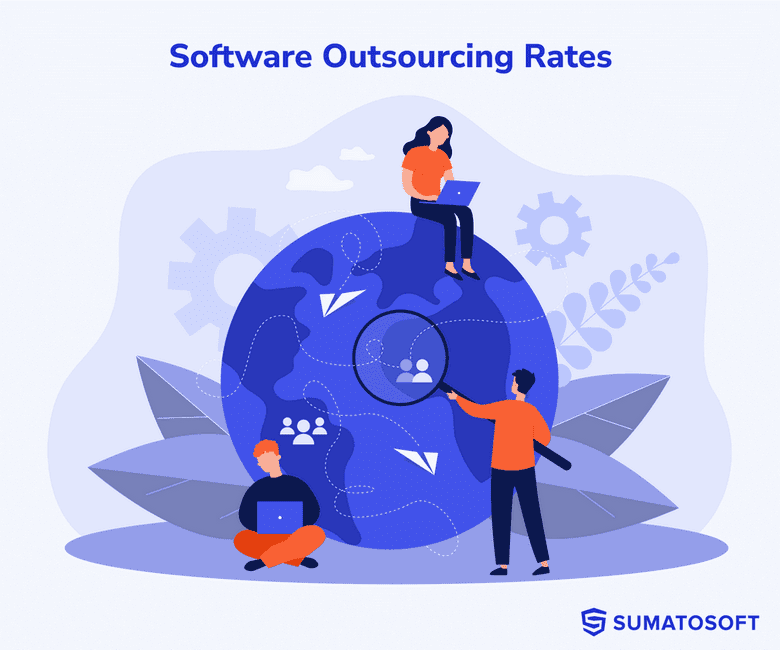Your Road To Success: Technical SEO vs On-page SEO


We live in a digital world where organizations look for versatility and functionality to attain a better image and give cut-throat competition to other brands. This is exactly why Software as a Service (SaaS) is gaining popularity these days. SaaS offers brands access to complicated software in a simple, flexible, and affordable manner.
We found 35 SaaS ideas that can be turned into life, and still, we didn’t list all ideas. SaaS start-ups are becoming more and more important with the number of benefits they are providing, this involves a detailed process that needs diverse steps taken place in order to run an effective marketing plan.
Because of increasing demand and rapid growth in technology, SaaS domains are everyone’s needs, especially tech-savvy firms. In this competitive atmosphere, firms find customer acquisition challenges, especially those that work in the B2B SaaS segment. Well, this is where SEO for SaaS comes into play.
There are several ways how SaaS businesses can improve their SEO. They may use content marketing and produce user-generated content (UGC) or articles. They can do in-house SEO and run a technical optimization of a website as well as refer to some link-building strategies. Or they can hire a third-party SEO services provider.
We at SumatoSoft definitely would recommend referring to a services provider. It connects with two facts. The first is that we are a professional provider of SaaS SEO services that specializes in its direction =) The second reason is that we’ve seen dozens of companies lose their money trying to do SEO in-house with the wrong specialists. Businesses went bankrupt because they couldn’t acquire new clients with SEO while paid advertising was too expensive for their business model. Its painful for us to see.
However, we decided to turn the tide and help those people who still want to do SEO in-house!
What is SEO in SaaS?

Consistent growth and revenue generation for SaaS companies relies heavily on SEO strategies that drive them toward success. It is important to understand and focus on putting SEO strategies together perfectly. SaaS SEO is the process of improving the organic traffic for your SaaS website by earning top ranks on SERPs for your relevant keywords.
Brands spend too much on performance marketing like PPC, social ads, affiliate marketing, etc. they see positive results as well. However, they quickly realize that the cost they had to bear is increasing and they have relied on it to a level that when they stop or reduce paid advertising, the traffic stops.
This is exactly why having a strong SaaS SEO strategy is important. It can drive consistent traffic and exponential organic growth. SaaS SEO involves increasing a platform’s visibility to put them in front of users who are:
- Searching for your software, they know who you are and want to know more about you.
- Searching for similar products, they know your software exists but wish to search for more software that might fit their needs better.
- Looking for software to purchase, they have already done their research and are willing to purchase.
- Looking for content that relates to your software. They might not require your solutions right away but are looking for something similar and might require your software in the future.
We want to discuss two major aspects of SEO: SaaS technical SEO vs on-page SEO.
What is Technical SEO?
To thrive online, businesses must leverage SEO not only for customer acquisition but also for nurturing prospects throughout their journey. This is where Technical SEO comes into play, particularly vital for SaaS companies.
Technical SEO pertains to the optimization of website elements such as crawling, indexing, rendering, and architecture, all with the aim of satisfying search engines’ critical requirements. Unlike on-page SEO, which focuses on content and user experience, Technical SEO deals with the website’s underlying infrastructure.
Google’s crawlers, tiny robots, are essential to this process. They crawl through websites that allow it, evaluating pages on multiple factors to determine if they align with Google’s algorithms for ranking. If a site isn’t crawl-friendly, these bots won’t index its pages, hindering the site’s online presence significantly.
For SaaS companies, investing in Technical SEO isn’t optional; it’s a necessity to boost organic traffic and improve visibility. Without focusing on these technical aspects, even a website with outstanding content and services may find itself lost in the vast sea of online competition.

Most businesses find SaaS technical SEO challenging because:
- SaaS marketers are too focused on other things like lead generation, hitting their targets, inbound marketing, and much more that they often overlook SEO.
- SaaS domains are regularly updating and producing new content and assets, making it difficult for brands to keep up with everything.
- More often than not, people are not fully aware of the same. They do not consider SaaS technical SEO because of a lack of information.
- Technical SEO is a slow process that requires a lot of patience. Sometimes, when a bug is detected it’s too late. Unearthing these issues is complicated and time-consuming.
- It includes elements that are not visible like load time of web pages, XML sitemaps, website structure, etc. and unless you monitor them proactively, they aren’t known.
Let’s work on overcoming these challenges and making SaaS technical SEO a smooth and easy process. At the end of this blog, we have some case studies that will help you understand this concept a little better. Continue reading!
Technical SEO vs on-page SEO: DIfference
Search engine optimization is a mix of various strategies and methods that are designed to help build brand visibility and get a higher ranking in relevant search queries. To explain in simple words, on-page SEO is a large concept and technical SEO is a part of it.
All types of SEO work towards improving visibility, but focus on different aspects. Let’s learn more about it.
SaaS Technical SEO
Technical SEO helps in optimizing the technical elements of the website. These aspects include mobile friendliness, site structure, and much more. Having your website optimized enough to be crawl-friendly and indexed is what makes your website rank. SaaS Technical SEO includes:
1. Site speed
It is a top-ranking factor that Google considers. Your website needs to be fast-loading with minimal hiccups.
2. Site Security
Google ranks websites that are secure. They need to be responsive and optimized enough to be used on phones, tablets, desktops, etc.
3. Mobile Responsiveness
Mobile responsiveness is crucial in SaaS SEO as users increasingly access services across various devices. Ensuring an optimal user experience on all platforms, from smartphones to desktops, directly impacts a SaaS company’s online visibility and ranking.
4. Site structure
Your website needs to be in the proper structure, there should be a seamless flow of valuable information.
5. Enriched content
If your content is plagiarism free and engaging, that does not show up anywhere else, gives you an edge to get better SERPs.
A SaaS website technical SEO audit needs to be done in order to discover technical issues in your website. Additional improvements can be done like XML sitemap, improving internal link building, schema markups throughout the website, and much more. This helps in improving the structure and helps search engines understand your website and content better. Let’s go to the second part of our abstract about technical SEO vs on-page SEO.
Bonus tip: You can use SEO checker by Sitechecker to conduct an On-page SEO Audit.
On-Page SEO
On-Page SEO includes optimization of numerous factors on your website so it’ll rank higher and get more organic traffic. SaaS technical SEO is a part of on-page SEO. On-Page SEO starts with technical improvement and then moves on to the website’s content and other strategies. On-page SEO helps in improving your domain authority and ranking on relevant search results.
With a fully optimized website, you can improve the website’s visibility and quality. Characteristics that help in optimizing your website are:
- Content, meta titles, and descriptions
- Canonical tags, Alt text.
- URL structure
- Unique content
- Image optimization and technical SEO.
To improve the overall on-page SEO efforts, you can follow the advice below:
1. Improved SaaS technical SEO
Improving the technical part of your website is a great way to make your website clean and give it a solid canvas. You can highlight content and other issues in the next step.
2. Curate perfect content
Every piece of the content present on your website needs to be optimized, enriched, and unique with information, links, and photos, and must be visually appealing. From your homepage to the metadata description, all the content caters to improving the traffic and encouraging more click-through rates (CTR).
3. Smart keyword strategy
This helps in improving link-building efforts, PPC campaigns, social media marketing, and much more. Your keywords need to be relevant and under the right user intent. They need to be placed in the right places. Your titles, meta descriptions, alt tags, and every other piece of content should include your keywords.
Keep in mind, there is a fine line between keyword optimization and keyword stuffing. It can improve your SEO efforts and penalize your website respectively.
4. Excellent internal linking structure
Building the perfect linking structure involves internal and external links to quality sites. Internal links are important to help Google bots crawl through and understand the most important pages of your site. They also encourage a lot of traffic, and CTR, reduce bounce rates and drive dwell times.
Intriguing Statistics About the Role of SEO
Are you familiar with Ahrefs? It’s one of the most revered tools in the SEO community, providing a comprehensive suite for marketers, bloggers, and businesses alike to monitor and improve their online visibility. We use it to research keywords, analyze content performance, run technical site audits, and more. It was launched in 2011 and it only grew since that time.
We use two sources to gather the statistics in the next paragraph: the state of SEO in 2023 from Ahrefs and reports from Think with Google.
- 53.3% of all website traffic comes from organic search. SEO is responsible for driving organic traffic.
- 28% of searches for something nearby result in a purchase.
- 51% of smartphone users have discovered a new company or product when conducting a search on their smartphones.
- The probability of visitors leaving increases by 32% as page load time goes from 1 second to 3 seconds.
- Articles with H2 and H3 tags receive better rankings than those without.
Websites using schema markup tend to rank four positions higher in search engine results pages (SERPs) than those without. It’s necessary to emphasize the technical SEO advantage of structured data.
An Approach to SaaS Technical SEO

In the battle of technical SEO vs on-page SEO, the second rival requires much more time to be described. So we focus on the details of the first rival, technical SEO, and then provide an example of an SEO strategy that includes both rivals.
There are majorly four aspects of SaaS technical SEO that ensure a healthy website and consistent performance. Let’s move past the above-discussed challenges.
1. Are your pages crawlable?
A sound website means that it is organized and structured in a way that Google bots find it easy to crawl and analyze all the content and code. They look at the site’s cleanliness. Cleanliness as in the information architecture and sitemaps.
To make it easy for crawlers to evaluate your website, you can use tools to minimize website errors like effective use of robots.txt., crawl rule implementation, internal linking structure, updated sitemap, and much more.
2. Are the pages indexable by search engines?
Indexing means that the crawlers have done their work and your website is saved in Google’s directory to be included in search results. Indexing is a critical part of crawling, ensuring that bots have effectively assessed, evaluated, and rendered your content.
To ensure that your website is indexable, you need to monitor aspects like caching, JavaScript, dynamic rendering, canonical tags, and redirects.
3. Is your website secure?
Website securing is another important aspect of technical SEO for SaaS businesses. Any lapses or errors in the website’s security can erode the visitor’s trust, not only this, but the search engines also find it difficult to rely on websites that are not secured and impede the visibility and ranking in the SERP.
To get this in check, you need to monitor whether the website is aligned with the SEO standards and implement the best practices for security like HTTPS. You can also refer to application security testing services.
4. How is your site performing?
The website’s performance is monitored in terms of its speed. It is an important part of defining the user experience and performance. Your SaaS website can have the best quality and valuable content, but if it’s not fast enough, what is the point? It will not rank in the search engine results.
Apart from this, large images are a significant factor in slow websites. There are 8 types of performance testing that can help you to identify the weak point of your site. To speed up the website’s load time, you need to pay close attention to image compression, increase mobile friendliness, minify JavaScript/CSS, caching, and implement a Content Delivery Network (CDN).
An Example of SEO Strategy for SaaS businesses

Alright, now let’s move on to the next section to understand a stepwise guide and curate the perfect SEO strategy.
Let’s see how some brands lay out a perfectly curated strategy and overcome their challenges.
Step #1: Let’s start with on-page SEO
Analyzing the company’s website is the first step. Brands have their on-page SEO basics clear and good, but in this competitive industry, it just isn’t good enough. But, the competitors are large companies with a long chain of command, meaning that their on-pages are out of date and were not scheduled for an improvement anytime soon.
This is an opportunity to improve ranking through on-page optimization and strategic link building. Let’s start with a content audit. Brands that have been in the SaaS market for a long time have tons of pages. We talked about big numbers like 1500 actual pages and around 4500 that Google picked up for various reasons.
They need to clean this up because:
- Feeding Google with unnecessary pages with a massic resource-suck.
- Old pages with outdated information were outranking some important and valuable pages.
- There were indexed pages with information that was confidential and not for the public.
They need to start by deleting and redirecting many pages that were holding them back. Moreover, deleting pages that were not adding value. Pages need to be analyzed on three metrics the pages bringing conversions, whether are they generating leads, and whether they are helping the brand rank or not.
With a content audit, comes the site’s speed. If the site turned out to be a nightmare with over six seconds of load time. It meant that over 20,000 clients were frustrated. To overcome this, the brand needs to take the following measures:
- Switched hosting companies.
- Removed all unused WordPress plugins.
- Replaced some plugins for a faster alternative
- Started incorporating browser caching and a CDN.
- Eliminated unnecessary redirects
- Optimized images on the entire website.
With all the above work done, it’s time for content gap analysis. They need to take up the 15 most profitable brands and started digging up the keywords that they were ranking for. After finding around 1300 relevant keywords, they need to deliver a list of 40 articles to their content writers to help bring highly relevant search traffic.
Step #2: The next step involves a juicy link-building strategy

On-page SEO and content optimization show excellent results in both generating organic traffic and rankings. It still isn’t enough. Competitive brands consistently publish national publications and attract hundreds of high-authority media links every month.
Now you have dozens of pages with valuable and great content but no links. You now need to double down on link building.
You can partner with SaaS link-building services and prior to working with them, you can see a significant difference. Your press team will be pumping out many press releases every month and linking them back to your website. Overdoing we be fatal and could get you penalized. You can focus your link-building towards:
- Creating diverse current link profile
- Reducing the anchor text ratios
- Boosting pages that were close to the top 3 relevant guest posts.
By now your website is optimized, the content machine is well-oiled, and the team is educated on the basics. Now it’s important we build more, better, and stronger links. There are 4 link-building approaches to enhance website authority from all angles.
- Develop highly relevant guest posts which are the main mover of their rankings.
- You need a diverse and natural backlink profile. This can be achieved through broken link building.
- Identify the most linkable topics and revamp them to become more comprehensive, lengthier, and engaging, has a different angle, and offer better user experience and design.
By this time, your organic traffic can increase over 57%, with this excitement, it’s time for a performance review.
Step #3: Time for Performance review
Because of so many changes, it must be difficult to keep a track of every little result every change got you. But taking these steps ensures optimization, so keeping a regular performance review is enough.
These are the strategies that can help brands boost their visibility and get better SERP rank. Regardless of how competitive your niche is, if you focus on low-hanging fruit and lay out a simplified roadmap, there is always a way to make SEO work for your SaaS company.
Brands have seen improved conversion rates, better referral traffic, and organic growth in traffic. Brands like Sumatosoft use techniques like improved organic CTR using pay-per-click testing, and digital PR to earn backlinks, optimize core web vitals, turn mentions into links, keyword gap analysis, hub & spoke, skyscraper, and focus on user experience.
Here is everything a brand needs to do to optimize its SaaS technical SEO, now let’s see some brands and the increase in their performance over a course of time.
- Hurdlr is an app used to track mileage, income streams, tax deductions, etc. They wanted to increase conversions, rankings, and website visitors. Over the course of one year with technical SaaS experts, they saw an increase of 2-3X in their Google rankings. Additionally, a 70% increase in the average position of their keywords.
- Brands like Smash Digital helped their clients see an increase of 269% in their organic traffic and 332% in their revenue in the first year. By the end of the 4th phase, their site took from a 120% increase to a 269% increase in their traffic.
- Hoth X helps SaaS brands improve their marketing efforts through technical SEO. They audit their website and look at the keyword rankings, traffic, links, anchor texts, and much more. Their website had some traffic but it was not growing, there was no optimization and they did not have enough link juice. Hoth X helped them strategize and create the perfect SEO plan.
SumatoSoft Offers Both Technical SEO and on-page SEO. And more
We know business challenges growing SaaS businesses face on the Internet. Challenges like a high customer acquisition rate, a low conversion rate, the absence of link-building and content strategy, 0 referral traffic, and unsatisfying organic traffic frustrate.
SumatoSoft helps to cope with these challenges by providing SaaS SEO services to companies in 27 countries across the globe. We use the following methods to reach results:
- PPC testing to improve organic clickthrough rate
- Digital PR to gain more trust from Google and get backlinks from companies like SEranking or Clutch
- Technical and on-page SEO optimization to improve ranking positions
- White hat link-building like a skyscraper technique
- Website UX/UI development to make it more user-friendly and appealing
- Content marketing, including content creation and use of hub&spoke strategy
- SEO consulting & strategy development
- Market research
If you see struggles in getting new clients, contact us. We’ll provide a free consultation and offer ways out.
Technical SEO vs on-page SEO: Key Takeaways
- In the battle of technical SEO vs on-page SEO there is no winner. The former is a part of the latter.
- Technical SEO helps in optimizing the technical elements of the website such as speed, security, friendliness, site structure, and more.
- On-Page SEO includes optimization of numerous factors on your website so it’ll rank higher and get more organic traffic.
- You can do SEO in-house or outsource it to third-party brands so they will help you achieve all your target goals.
Let’s start
If you have any questions, email us info@sumatosoft.com




